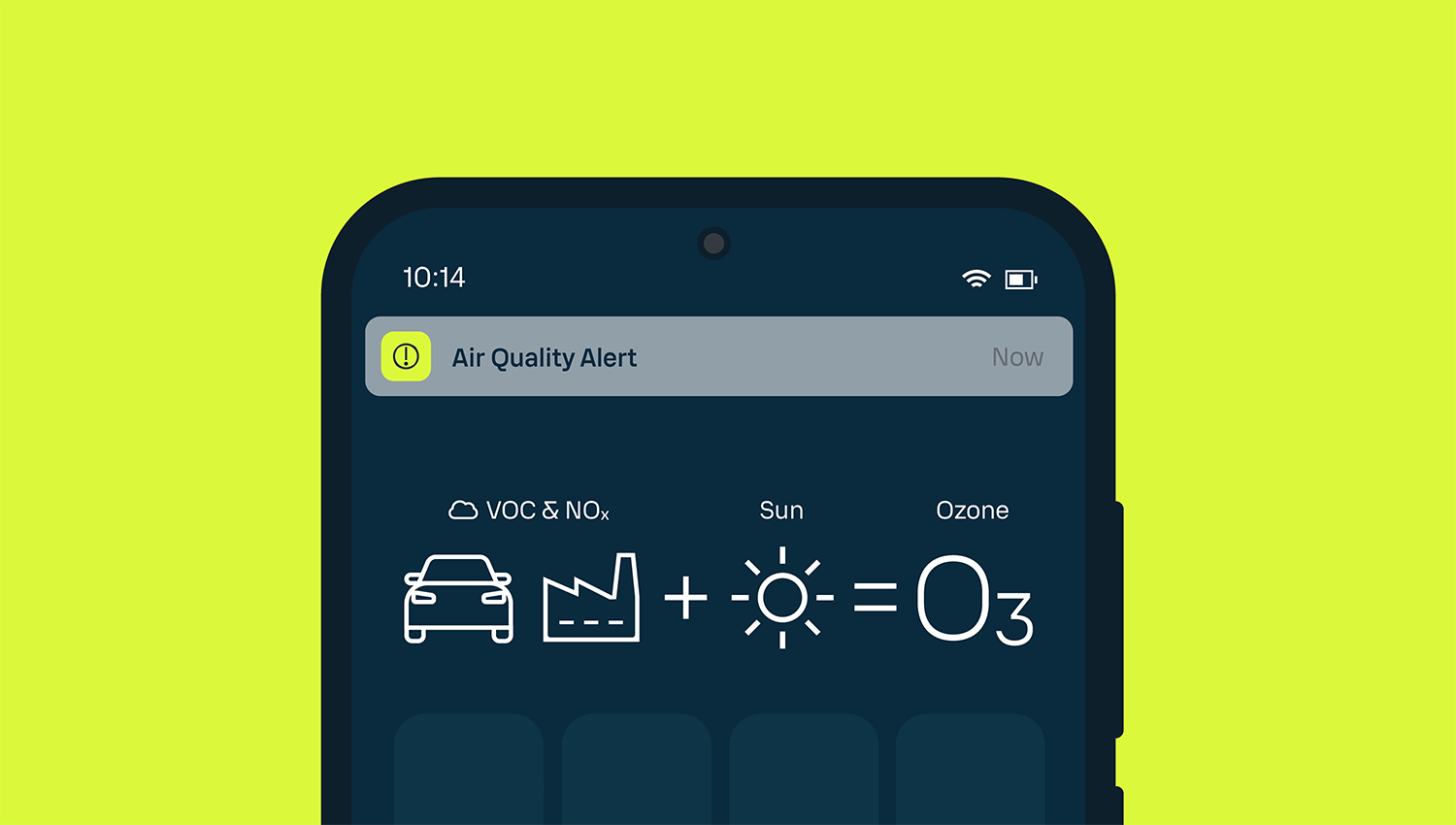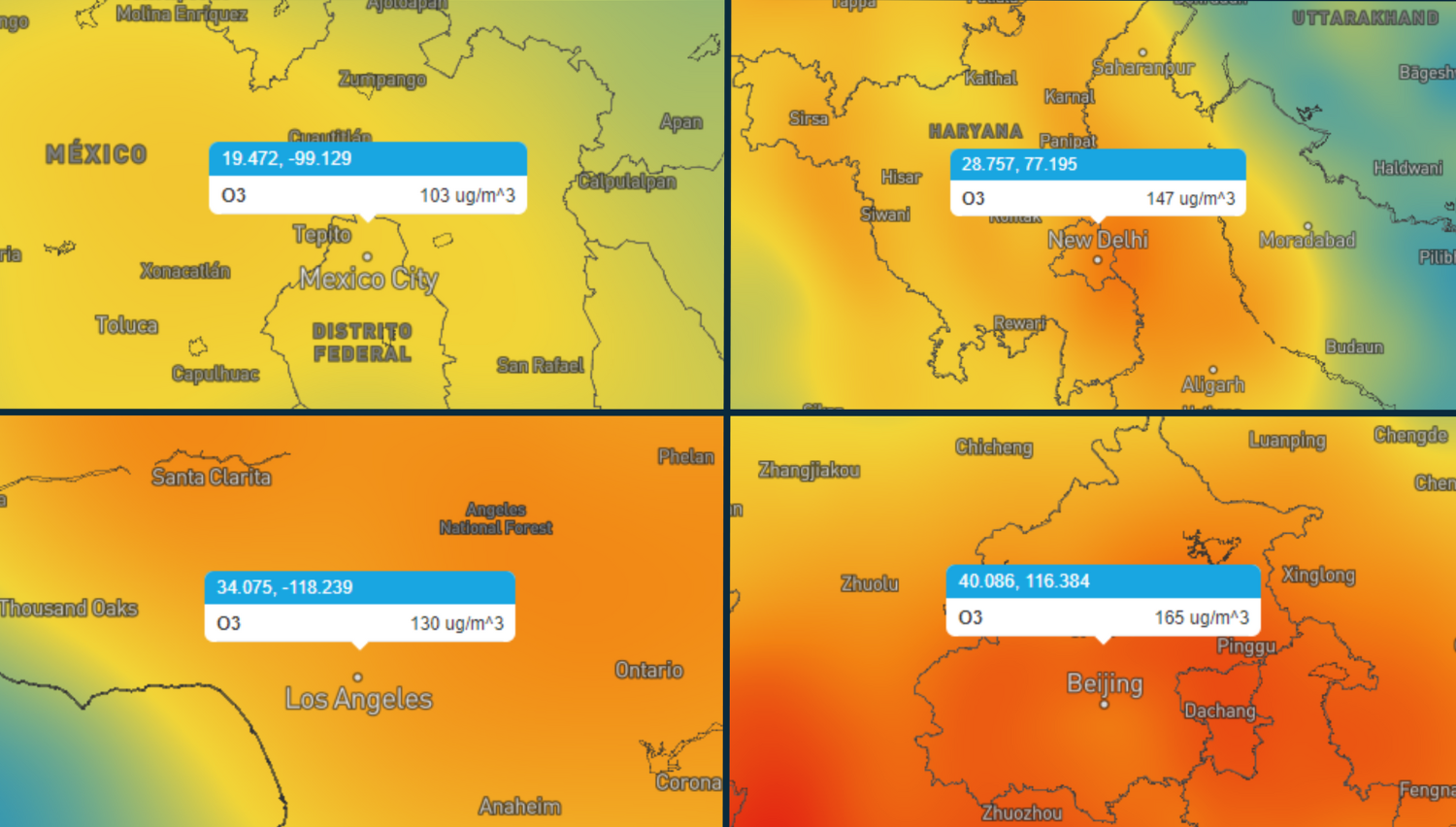It’s the middle of summer. Your phone buzzes: Air Quality Alert. You look out your window. A couple days ago, the air was filled with smoke from nearby wildfires, but today the air looks clear, crisp, and beautiful.
This is the danger of ground-level ozone: Although colorless and odorless, it is responsible for the death of hundreds of thousands annually across the globe, a number projected to increase without proper air quality regulations.
What is ground-level ozone and how is it formed?
Ozone is found in two different layers in the atmosphere: “Good” ozone in the stratosphere (upper atmosphere) and “bad” ozone in the troposphere (lower atmosphere). The upper ozone layer, formed naturally, serves as a protective shield against harmful ultraviolet radiation. Ozone in the lower atmosphere, however, is a different beast. Ground-level ozone forms when two pollutants - nitrogen oxides (NOx) and volatile organic compounds (VOC) - react with the UV radiation in sunlight. The two pollutants are emitted by human sources like cars and industrial plants.

As sunlight becomes stronger in the summer, ozone production increases. Summer heat waves typically bring cloud-free skies and little wind, allowing ozone to accumulate in the stagnant air, quickly reaching unhealthy levels. Air quality is generally best in the morning hours, and quickly deteriorates as the sun rises and people begin to drive their cars to work.
Ozone levels increase over Denver as the day progresses, reaching 115 parts per billion (ppb). Denver is known for its 300 days of sunshine annually, fueling the production of ozone. The National Ambient Air Quality Standard (NAAQS) for ozone in the United States is 70 ppb, averaged over eight hours. Ozone levels above this can begin to cause inflammation and irritation to the lungs.
In densely populated areas like cities, higher emissions of NOx and VOCs mean more ozone is produced, leading to unhealthy air quality during the summer and impacting the health of millions.
The weight rests on all our shoulders
Ground-level ozone is a global issue. Although invisible to our eyes, ozone can travel hundreds of miles, surviving in the lower atmosphere for several weeks. In a study of European ozone transport, it was found that more than 50% of Europe’s ozone pollution originates from other continents. The pollutants we put in the air can directly impact the health of someone in a different country – in short, we all share responsibility for global health.
Older adults are especially vulnerable to health impacts from ozone, with long-term exposure contributing to cases of Chronic Obstructive Pulmonary Disease (COPD), an inflammatory lung disease. Children are also at risk; in Lagos, Nigeria, air pollution caused over 6,000 deaths of children under 5 in 2018.
India and China see the most ozone-related deaths globally. In Europe, over 95% of the population is exposed to ozone levels exceeding air quality guidelines, leading to more than 100,000 deaths between 2015 and 2017. Over 100 million people in the United States live in counties with failing grades for ozone pollution.
Plants are choking, too
Ozone isn’t just bad for human health. High concentrations of ground level ozone can reduce crop yields, impacting food security. Particularly sensitive crops include soybeans, cotton, and peanuts. In California, losses in crops like nuts and grapes could be as high as $1 billion per year, attributable to high ozone levels during the summer growing season. Because of the negative impacts it has on plants, high levels of ground-level ozone may threaten global biodiversity in the future.
As awareness projects, some organizations are creating ozone gardens with ozone-sensitive plants to show the responses to the pollutant over a growing season.
The future of ozone pollution
Globally, ozone exposure and mortality is increasing, particularly in urban areas. South Asia has seen the highest increase of ozone concentration, ozone exposure, and ozone-related mortality. This is due to increased emissions of ozone precursors (NOC and NOx), longer and more intense heat waves, and growth of urban areas.

Elevated ozone levels over major cities struggling with air quality issues.
A recent study by Yale School of Public Health estimates that without strong climate and air pollution controls, ozone-related deaths could increase by 94%. As heatwaves grow more frequent, urban areas expand, and wildfires intensify, it is crucial to enforce strict air quality regulations to control emissions.
In the United States, the number of people exposed to unhealthy levels of ozone is on the decline. This progress is a direct result of effective legislation, particularly the Clean Air Act, which establishes ozone standards nationwide. A key element of this act is the recently introduced Good Neighbor Plan, which aims to reduce NOx emissions from industrial sources.
A changing climate
A recent study by Yale School of Public Health estimated that with only weak climate and air pollution controls, ozone-related deaths would increase by 94%. As heatwaves become more frequent, urban areas expand, and wildfires burning more intensely, it is vital to control our emissions through strict air quality regulations. Equally important is communicating the risks on days with unhealthy ozone levels and educating the public about this invisible yet harmful pollutant.
With continued diligence, public education, and effective risk communication, meaningful change is possible. Stay informed about local air quality, consider reducing travel by car, and limit activities when air quality levels are unhealthy.
Xweather offers a full suite of data and software products to aid businesses looking to bring air quality awareness into their weather-sensitive operations. Explore our weather API, view the MapsGL vector mapping demo, or explore the Xweather Insight weather confidence platform to learn more.
